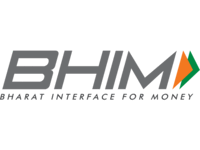Kasargod Dwarf(Kullan) Cow(Pashu)

Indian desi (native) breeds of cattle are declining in numbers at a very rapid rate. There were nearly 75 breeds of cattle in India currently only 37 recognized breed of cattle remain in India as of today, most are endangered, most of them are reared by adivasis (indigen) or native people. Different breeds have their set of qualities to cope with the local habitat and weather. Basically cows, most animals and even humans living in hot and humid climate tend to become smaller.

This breed is found in Mangalore, Kasargod and some other parts of Karnataka. Coorg also host this type of cows. Some centuries back this type of cows were also found in Kannur and other northern parts of Kerala, it was know as (sahya pashu – sahyadri hill cows). However almost all the cows have vanished because of slaughter and mainly because of (AI)Artificial Insemination. AI is killing all our native breeds, slaughter houses are secondary AI has to be much feared.
Small cows are excellent milkers because their feed to milk ratio is high as compare to other hybrid cows. Kasargod cow in the picture below; during peak milking time gave 2.5 to 3 litres of milk in a day. Also all Indian breed of cows produce A2 milk where as western or hybrid produce A1 milk. No clear research papers are published but definitely A2 has better taste, flavour and is also healthy. A1 milk is associated with diabetes, obesity and cardiovascular diseases.

Hump on the Indian cows help them to adjust the daily water requirement also the dewlaps(skin on the neck) helps them to cope with the extreme heat, keep most diseases away and also calve without any difficulty. On the other hand hybrid and western cows suffer horribly in Indian climate and in the long run they become non-sustainable and ultimately are send for slaughter(Common phenomena in Kerala). All the first generation hybrid cows born to native breeds are averagely healthy and good milkers however after two or three generation things become terrible, If mothers are not healthy then new born calf will definitely be in bad shape. Also in AI line breeding and inbreeding will be common because most semen are few years old, chances are mother and baby will get the same bull semen, which causes various complication.
Kasargod Cows are descent Milkers Compare to Feed Ratio and Body size
46 Replies to “Kasargod Dwarf(Kullan) Cow(Pashu)”
Comments are closed.






Where can I get a kasargod dwarf in idukki area?
Ans:- Hello Sanku,
Send you a PM. I am not aware of people dealing with cows in Idukki. Have send details of people from Kottayam Dist.
what is the pregnancy period of kasargode dwarf?
Ans:-
Praveen,
it is 9 months and 9 days for almost all Indian breeds. But some times cows can deliver 3 or 4 days prior to 9 months or a few days post the period mentioned.
One of my Kasaragod cow delivered 4 days prior to 9 months, that to in the morning I took here out for grazing and in the evening she gave birth. with absolutely no complication and assistance. This is the beauty of this breed.
Where can I get kasargode dwarf in Calicut ? please help
Ans: Sent you personal message.
I have one cow, kasargod kullan, 2 years old I am looking for a person to buy it. Now it is time for breeding
please mail me the details of the dwarf cow breeding.
What specific details are you looking for?
they are native cattle and they will adjust well in almost any part of India.
I have a kasargod dwarf cow, 12 months old, when can i prepare the cow for breeding, and also where
can i find a bull. pleaase let me know
—
Ideal time to breed cows is 2 years.